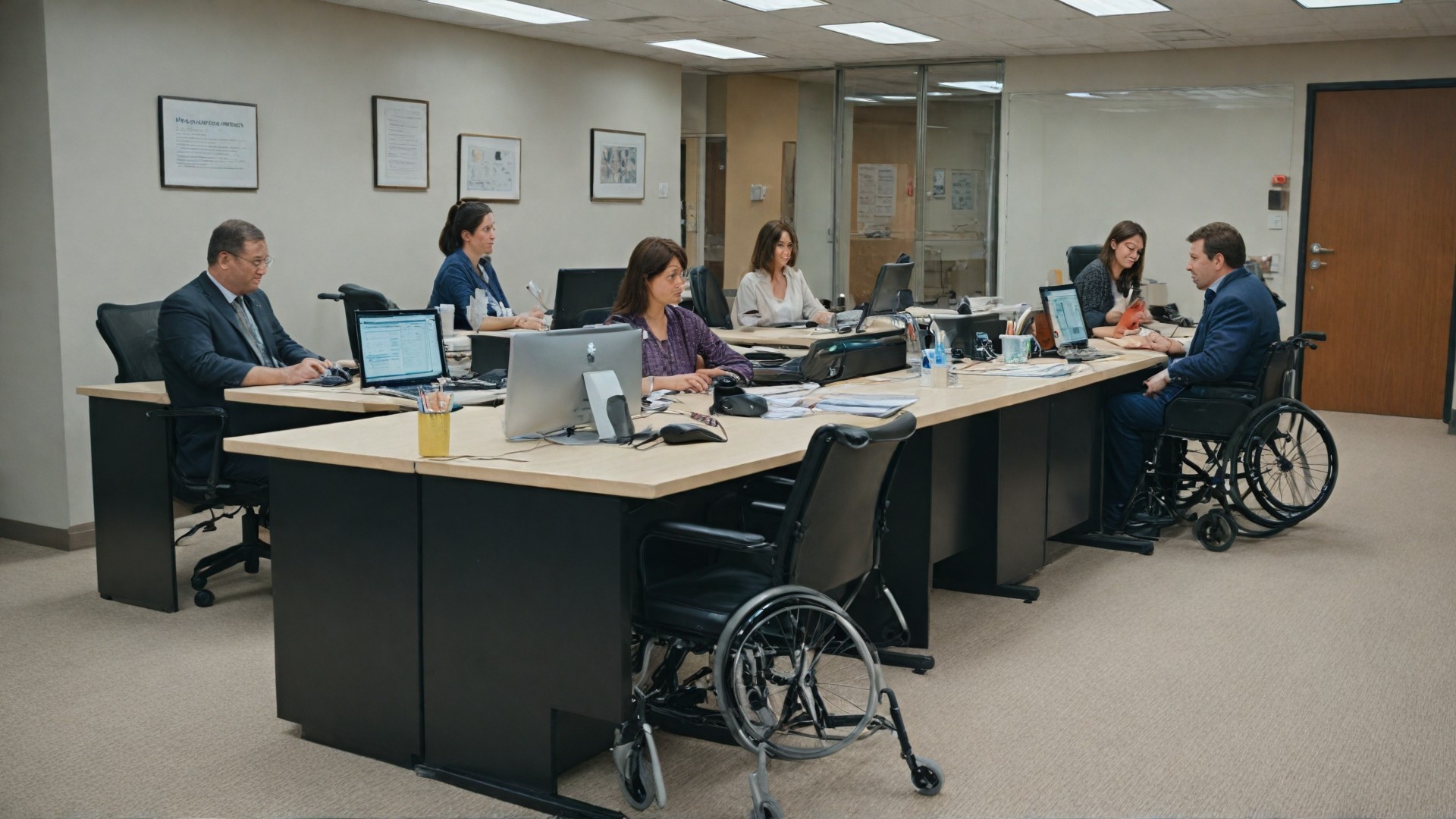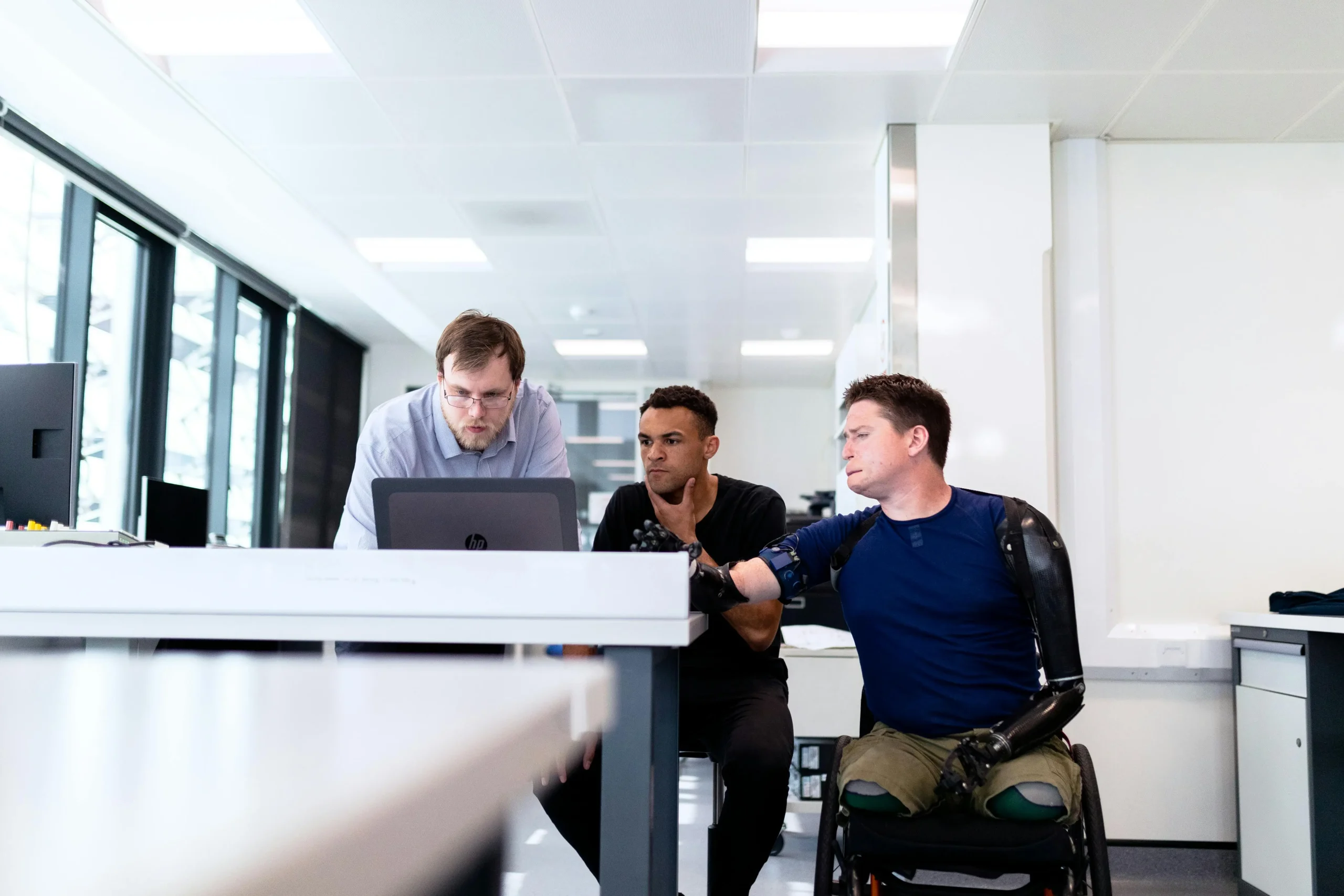Creating an inclusive workplace isn’t just a buzzword or trend; it’s a vital approach to empower individuals, build diverse teams, and drive innovation in today’s fast-evolving job market. Accessible employment transforms businesses and lives alike by ensuring that workplaces are genuinely open to all, irrespective of physical, digital, or social barriers.
Why Accessible Employment Matters
In a world where one in five people experience some form of disability, accessible employment is both a moral and strategic imperative. Accessible workplaces allow every individual to bring their best to the table, creating a stronger, more dynamic workforce. Accessibility doesn’t just boost morale; it has tangible effects on the bottom line, enhancing employee satisfaction, retention, and innovation.
Understanding Accessible Employment
What Is Accessible Employment?
Accessible employment goes beyond physical adjustments. It’s the practice of creating a work environment where all employees can thrive, regardless of their individual needs.
Defining Accessibility in the Workplace
Accessibility in the workplace means removing obstacles that hinder productivity and inclusion. This can include physical adjustments, assistive technology, and clear, supportive policies.
Types of Accessibility Needs in Accessible Employment
- Physical Accessibility: Ensuring that individuals with mobility needs can navigate the workplace comfortably.
- Digital Accessibility: Modifying technology and online resources so everyone, including those with visual or hearing impairments, can access information.
- Emotional and Social Accessibility: Promoting an environment where mental health is prioritized and employees feel safe sharing their needs.
Benefits of Accessible Employment
Increased Employee Satisfaction and Retention
Employees feel valued when their needs are met, resulting in higher job satisfaction and lower turnover. People want to stay where they feel seen and respected.
Diverse Perspectives Drive Innovation
Different viewpoints spark creativity. Inclusive environments foster discussions that lead to innovative solutions and fresh perspectives.
The Business Case for Accessibility
How Accessible Employment Benefits Your Company’s Bottom Line
Cost Savings through Reduced Turnover
Accessible employment reduces turnover, which can be costly for any organization. When employees feel included, they’re more likely to stay.
Building Brand Reputation as an Inclusive Employer
Being recognized as an accessible and inclusive employer not only attracts talent but also builds a positive brand image.
Accessible Employment and Legal Compliance
Key Regulations on Employment Accessibility
Regulations like the Americans with Disabilities Act (ADA) outline requirements for making workplaces accessible. Non-compliance can lead to significant legal risks.
Avoiding Legal Risks through Proactive Inclusion
Proactively adopting accessibility can help prevent costly lawsuits and penalties, creating a more stable, risk-free environment.
Creating a Physically Accessible Workplace
Assessing and Improving Physical Accessibility
Conducting a Physical Accessibility Audit
Start with an audit to identify barriers that might impede access for people with disabilities.
Essential Physical Modifications for Accessibility
- Wheelchair Accessibility and Ramps: Easy access ramps and spacious areas enable wheelchair users to navigate freely.
- Accessible Restrooms and Facilities: Inclusive restrooms are essential for ensuring everyone’s needs are met.
Importance of Sensory Considerations
Physical comfort goes beyond wheelchair access. Sensory adjustments like noise control and adaptive lighting make a difference for many employees.
Digital Accessibility in the Workplace
What Is Digital Accessibility?
Digital accessibility ensures that online resources are usable by all, including those with visual, auditory, or cognitive impairments.
Why Digital Accessibility Matters
In today’s digital-first world, inaccessible websites and software exclude talented individuals. Making these resources inclusive is critical.
Creating an Accessible Digital Environment
Designing Websites and Tools with Accessibility in Mind
From readable fonts to alternative text for images, digital accessibility measures make a profound impact on inclusivity.
Training Employees in Digital Accessibility
A team that understands digital accessibility contributes to an inclusive culture. Employees trained in assistive technologies and accessible content standards become more empathetic and aware.
Building an Inclusive Company Culture
How to Foster a Culture of Inclusion
Developing Inclusive Policies and Practices
Clear policies ensure that accessibility is consistently prioritized. This could include accommodations, flexible work arrangements, and more.
Creating a Supportive Environment for Diverse Needs
A culture of inclusion makes employees feel empowered to voice their needs without fear of stigma.
Encouraging Open Communication on Accessibility
Empowering Employees to Speak Up about Accessibility Needs
Encourage open dialogue on accessibility by fostering a judgment-free environment.
Conducting Regular Feedback Surveys on Accessibility
Collect feedback frequently to understand and address any accessibility challenges employees may face.
Hiring and Supporting Diverse Talent
Accessible Hiring Practices
Creating Inclusive Job Descriptions
Ensure that job listings are accessible and free from language that might inadvertently discourage individuals with disabilities from applying.
Accessible Interview Processes
Offer accommodations for all interview stages. This can mean providing ramps, offering virtual interviews, or ensuring other needed accessibility measures.
Providing Ongoing Support for Employees with Disabilities
Setting Up Mentorship and Support Programs
Mentorship programs help new hires feel welcomed and supported, fostering long-term commitment.
Offering Flexible Work Options and Accommodations
Flexibility in work arrangements can greatly benefit employees with disabilities, allowing them to perform at their best.
Embracing the Journey Toward Workplace Accessibility
Inclusion isn’t a one-time goal but an ongoing journey. Accessible employment strengthens teams and brings people together, creating a more dynamic and forward-thinking workplace. As you take steps toward accessibility, remember that even small changes can make a profound impact on someone’s life.
FAQs
- What are the key components of accessible employment?
Accessible employment includes physical, digital, and emotional accommodations to ensure a fair work environment. - Why is accessible employment important for businesses?
It boosts employee satisfaction, lowers turnover, and enhances brand reputation. - How can employers make their workplace physically accessible?
Employers can provide ramps, accessible restrooms, and adjust spaces to be wheelchair-friendly. - What is digital accessibility, and why does it matter?
Digital accessibility ensures online resources are usable for all, vital in our digital-centric world. - How does accessibility impact company culture?
An accessible workplace fosters an inclusive culture that values and supports all employees. - What changes can be made to improve workplace accessibility?
Employers can conduct audits, make sensory adjustments, and create clear policies on accessibility. - What are the benefits of inclusive hiring practices?
Inclusive hiring expands the talent pool and brings diverse perspectives to the company. - How do accessible workplaces benefit employee retention?
Employees who feel valued are more likely to stay long-term, reducing turnover costs. - How can companies encourage open discussions about accessibility?
They can establish a safe space for feedback and implement regular accessibility surveys. - What are some resources for employers on accessible employment?
Organizations like ADA and JAN provide resources and guidance on accessibility best practices.
Internal Links:
- https://equalcapablejobs.com
- Top Tips for Finding Jobs for People with Disabilities
- The Benefits of Disability Inclusion: Why Your Company Needs It
- Essential Skills for Career Growth in the Disability Community













